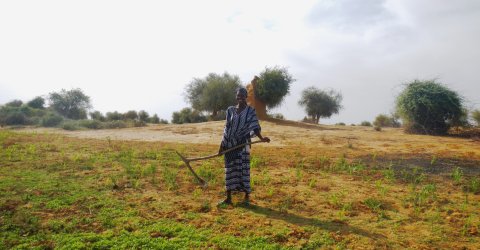
Women in flood-recession agriculture in the valley of the Senegal River
The middle valley of the Senegal River is a vast flood plain fed by the annual flood of the River. Numerous depressions form a vast seasonal wetland where some 100,000 hectares are flooded each year. Located in the heart of the Sahel, this alluvial valley is a water-rich area where societies have adapted to the rhythm of the flood. The Halpulaar people have always fished, bred livestock and especially conducted flood-recession agriculture on these lands.
The balance of this wetland is affected however by many environmental changes that have occurred since the 1970s: drought, dam-building and the development of irrigation. Faced with these threats, women are today playing a key role in maintaining the agricultural regime in the area.
Traditionally, the women of the household are in charge of the falo, crops grown in small vegetable gardens of about 0.4 to 0.5 hectares which cling to the banks of the river. Cultivation of sweet potatoes, tomatoes, melons, cowpeas and peanuts ensures a supply of food to the valley's weekly markets during the dry season. This activity provides the women with income and a degree of financial independence within the household, while contributing to the food security of the region.
Women also have a growing involvement in the farming of the walo, the vast flood basins traditionally cultivated by the whole family for growing sorghum. The migration of men to the cities and the increasing enrolment of children in schools is reducing the labour available to farm these floodplain areas and is making women the sole guarantors of the maintenance of this traditional flood-recession agriculture.
Laurent Bruckmann, PhD candidate, University of Paris Diderot
© Image courtesy of Laurent Bruckmann